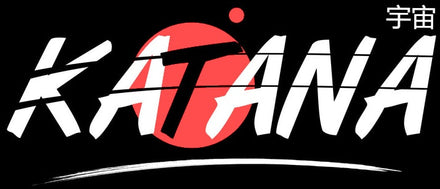The bokken holds immense popularity, especially among enthusiasts of Japanese culture and martial arts practitioners. However, even though it's a familiar term, not everyone truly comprehends its essence. What exactly constitutes a bokken, and how is it crafted? Are there preferred tree types for its creation? Moreover, how does it differ from bokutō or kidachi? Delving into these inquiries will provide a deeper understanding of this remarkable subject.
Exploring Bokken
In Japanese writing, the term "bokken" or 木剣 translates to a "wooden sword". Although Western culture recognizes it, in Japan, the term "bokutō" 木刀 is commonly used for wooden swords. The bokken originated in the 14th century alongside the emergence of sword training schools. Initially designed to mimic the shape of a katana, it has evolved to encompass all wooden swords, just as "katana" refers to all Japanese swords, despite originally indicating a specific model.
While a guard or tsuba, serving to protect the hand from the blade's edge, is not essential for a bokken, many possess none. The primary purpose of a tsuba is for training safety to prevent accidents, particularly for beginners who might otherwise risk serious injuries due to the katana's sharp blade.
A fascinating anecdote about the bokken involves Japan's renowned samurai, Miyamoto Musashi (1584-1645), who frequently engaged in duels using a bokken. Among his notable feats is his victory over the formidable opponent, Sasaki Kojiro, at the age of 28, using an improvised bokken carved from a boat oar. This instance led Musashi to adopt the bokken as his weapon of choice, likely driven by his ideology and the desire to avoid taking lives.
Manufacturing Techniques

Bokkens are crafted exclusively from wood. Commonly, Japanese white or red oak, renowned for its shock resistance, is the preferred choice. Other woods, such as buna, Japanese beech, biwa, and yuzu, are also employed for making wooden swords. Additionally, some bokken models are carved from various types of ebony, resulting in heavier swords suitable for distinct training approaches.
For oak, only trees aged 70 to 80 years or older are used, while other trees must reach at least 200 years to provide a trunk of sufficient dimensions. The trunks are then cut into longitudinal slices, and they undergo traditional air-drying for approximately a year. In modern times, mechanical processes have significantly reduced this drying period to just 15 days. The wooden slice is then shaped into a bokken using a template, with the wood further carved to form the tip and edge. To achieve its final shape, the bokken undergoes refinement with about twenty different planes featuring varying curves and angles. The finishing touch involves sanding the bokken with fine sandpaper.
Bokken and Its Variants
As mentioned earlier, the bokken is a wooden sword that can encompass various types of wooden swords. Some are designed for specific techniques, while others serve as training swords with blade styles differing from the katana.
For instance, the kidachi or kigatana resembles a tachi (the ancestor of the katana) but is crafted from wood. It shares the same length, curvature, and lightness as the classic tachi. Similarly, a wooden version of the katana is known as uchigatana, a more recent variant of the tachi without a specific name. Additionally, a straight katana without the recognizable curve is called chokutō, believed to be one of the earliest Japanese katana models inspired by Chinese and Korean swords. While not common, it also exists in wood without a specific designation. Similarly, just as the katana has its short companion sword, the wakizashi, the bokuto has the shotō, a short wooden sword.
Furthermore, some longer Japanese swords with blades measuring over 60 cm are entirely made of wood. The most renowned among them are the daitō, equivalent to a long sword, and the nodachi or ōdachi, which boasts a blade length exceeding 90 cm. The nodachi requires two hands for wielding due to its oversized length. Though available in wood, these models lack specific names and are simply referred to as wooden nodachi. Another example is the nagamaki, a very long sword with a handle representing almost half of its total length, known as mokusei nagamaki in wooden form.
Uses of the Bokken

Unquestionably, the primary purpose of the bokken is for training. Its wooden blade ensures safety during practice, making it ideal for beginners to learn sword techniques. However, its applications extend beyond training, finding extensive use in martial arts, particularly for specialized practices. For example, in aikido, wooden weapons training complements hand techniques, enhancing vigilance, anticipation of movements, and overall movement and positioning. Some of the following exercises are commonly performed:
- Suburi: Practicing cutting movements in the air to enhance flexibility, particularly in the back and shoulders.
- Kumitachi: Two opponents engage in combat, each wielding a bokken.
- Tachi dori: An exercise involving bokken versus empty-handed techniques, focusing on disarming techniques.
- Katas: Codified sequences of movements designed to refine and purify techniques. Katas are practiced not only in aikido but also in judo, karate, iaidō, kendo, aikibudo, jōdō, gendaï budō, and wadō-ryū. While kendo still uses bokkens for kata practice, combat is done using shinai.
The bokken carries significant historical and cultural importance in the way of the sword, serving as both a wooden training sword and a fully-fledged weapon, even in modern times. Once again, Japan showcases how samurais, their swords, and their traditions profoundly influence the country's history.















